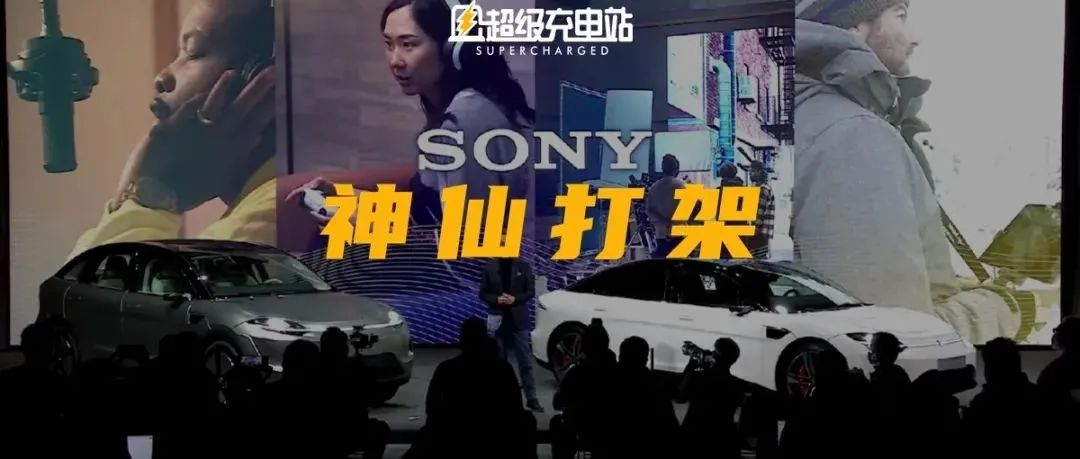Author: LYNX
On the first working day of 2022, the supercharging station introduced Mercedes-Benz’s New Year’s “trump card” – the all-new pure electric concept car VISION EQXX.
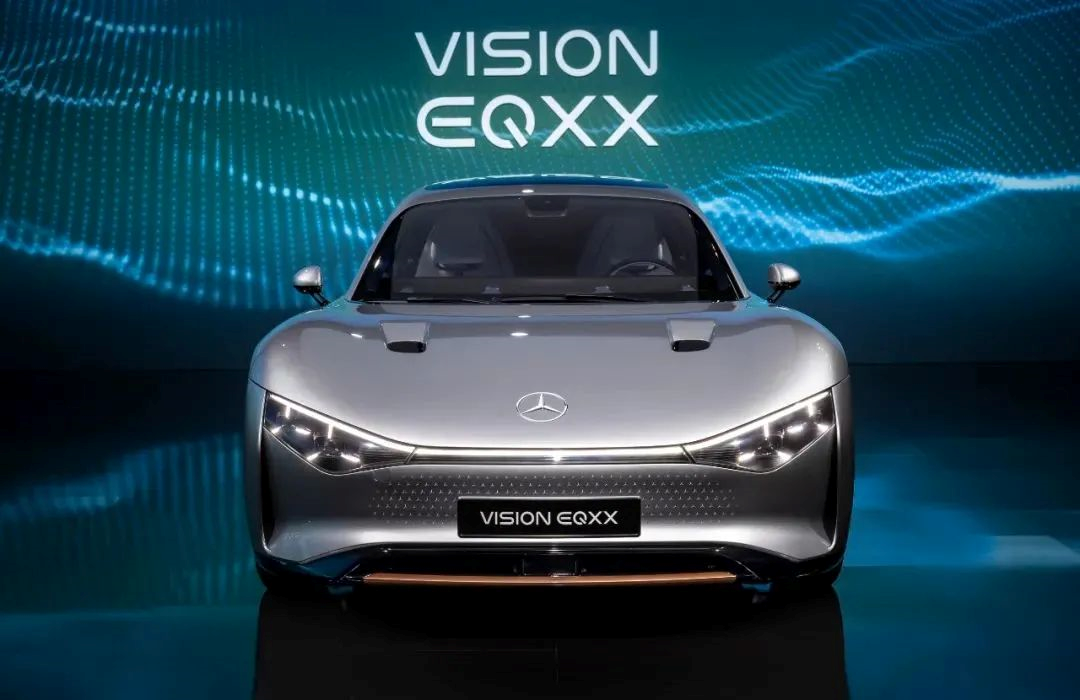
And this is just the New Year prelude of the giants’ battle for smart cars.
At CES 2022, being held on the other side of the ocean, technology giants are launching a “fierce battle” in every aspect of smart cars including intelligent cabins, autonomous driving and more.
Although the full name of CES is still “International Consumer Electronics Show,” it has evolved into the most important technology event for smart cars at the beginning of each year.
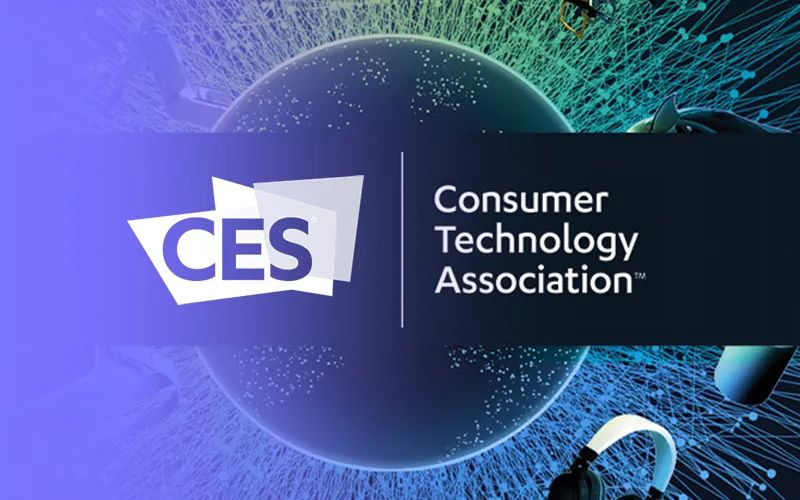
In the past, smart phones and laptops were the absolute protagonists of CES. Now, these consumer digital products have given way to automotive technology.
This still verifies the old saying that in addition to the “fuel switching to pure electric” energy structure transformation, the greater imagination for the future of cars will focus on “intelligence” –
After the small smart phone completely changed people’s lives, a larger “four-wheel super mobile terminal” has become another key area to change the world.
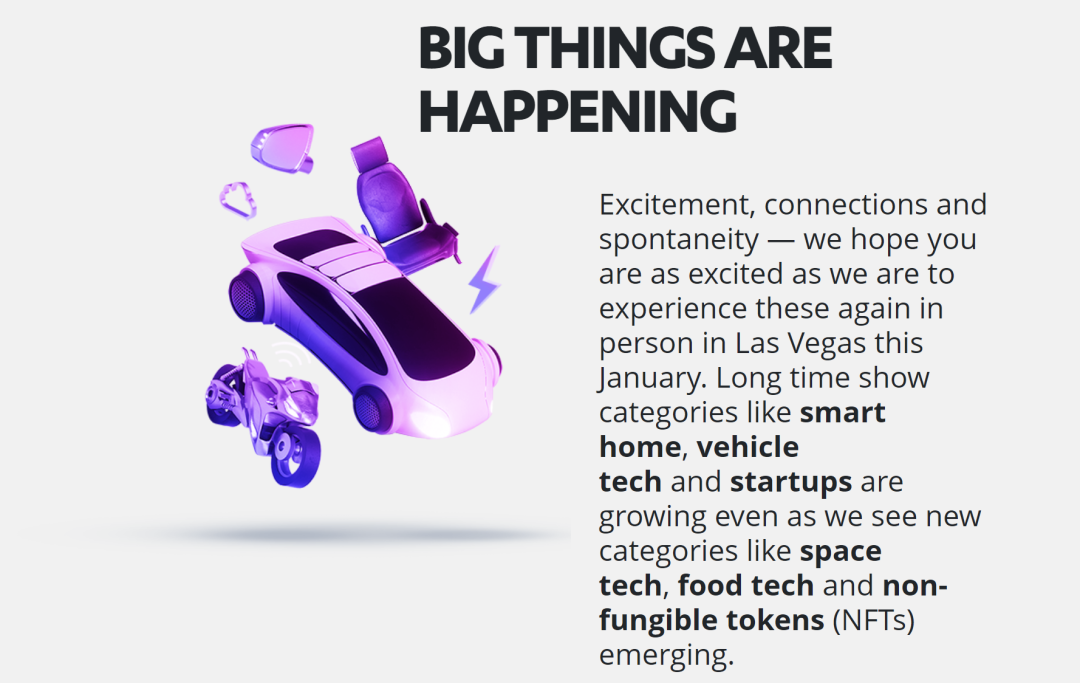
Sony cars, reflecting reality
As early as the 2020 CES exhibition, Sony showcased a pure electric concept car named VISION-S for the world.
At that time, the official promotional rhetoric was still so familiar: “Sony will not become a car manufacturer, but is committed to becoming a promoter of the automotive industry reform.”
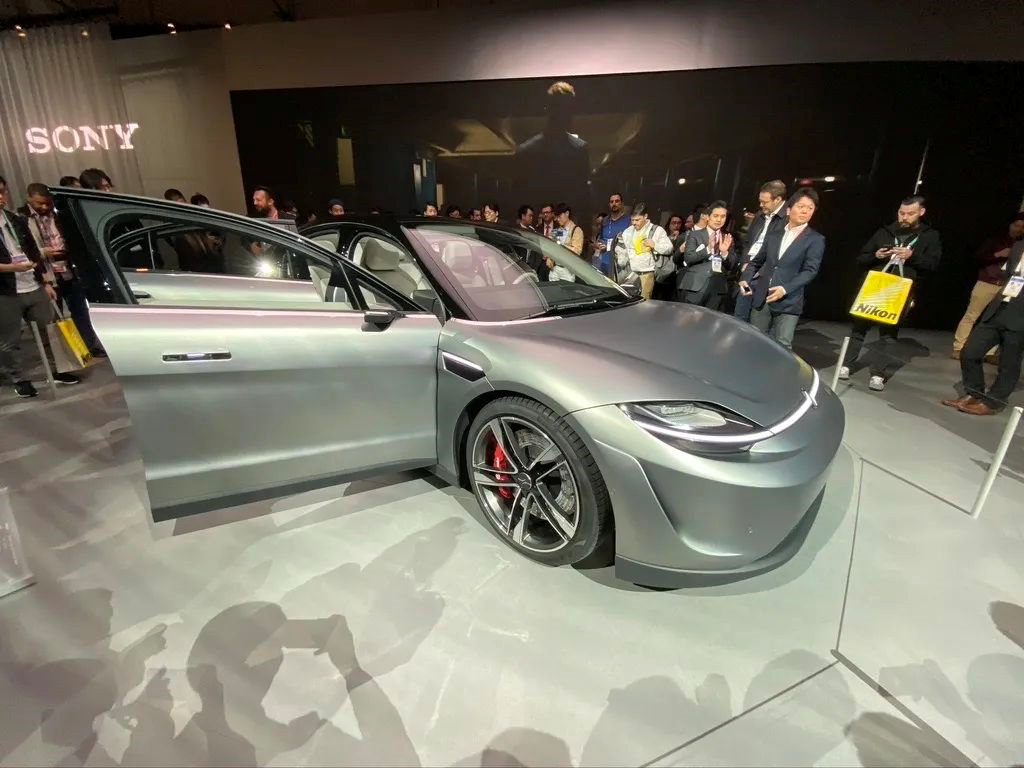
Two years later, “Sony car making” has gone further at CES 2022.
After introducing the latest VR electronic game device, PlayStation VR2, Sony’s Chairman, President and CEO Kenichiro Yoshida slowly drove out a brand new concept car behind him: VISION-S 02.
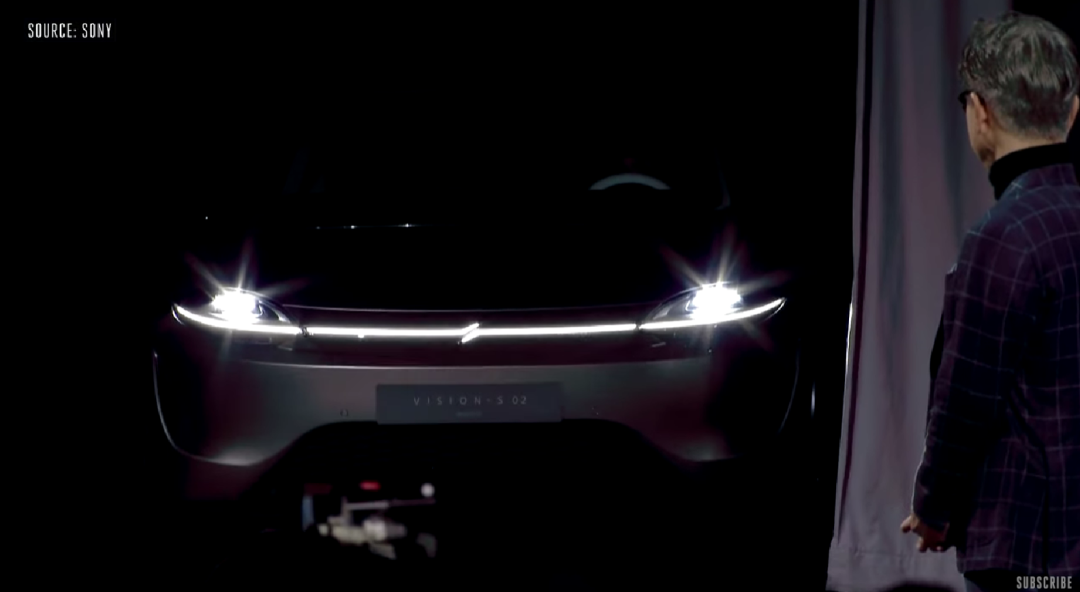 The design of the new car is closely in line with the previously unveiled Sony VISION-S concept car, but has been “elevated” to become an SUV.
The design of the new car is closely in line with the previously unveiled Sony VISION-S concept car, but has been “elevated” to become an SUV.
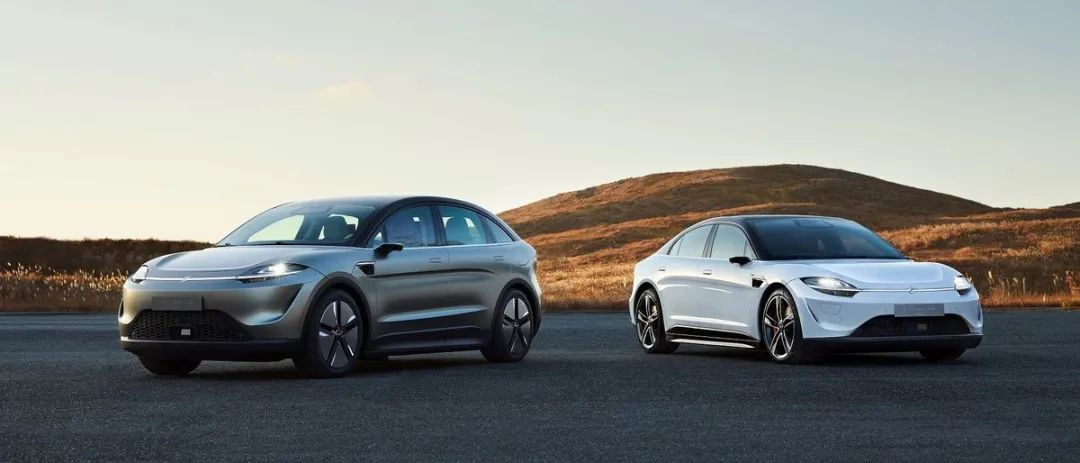
As a technology company, Sony is clearly more interested in discussing the future trends in intelligent automotive technology development, such as safety, adaptability, and entertainment, rather than traditional information about vehicle size, range, and power, with VISION-S 02 as the centerpiece.
Safety/Adaptability/Entertainment
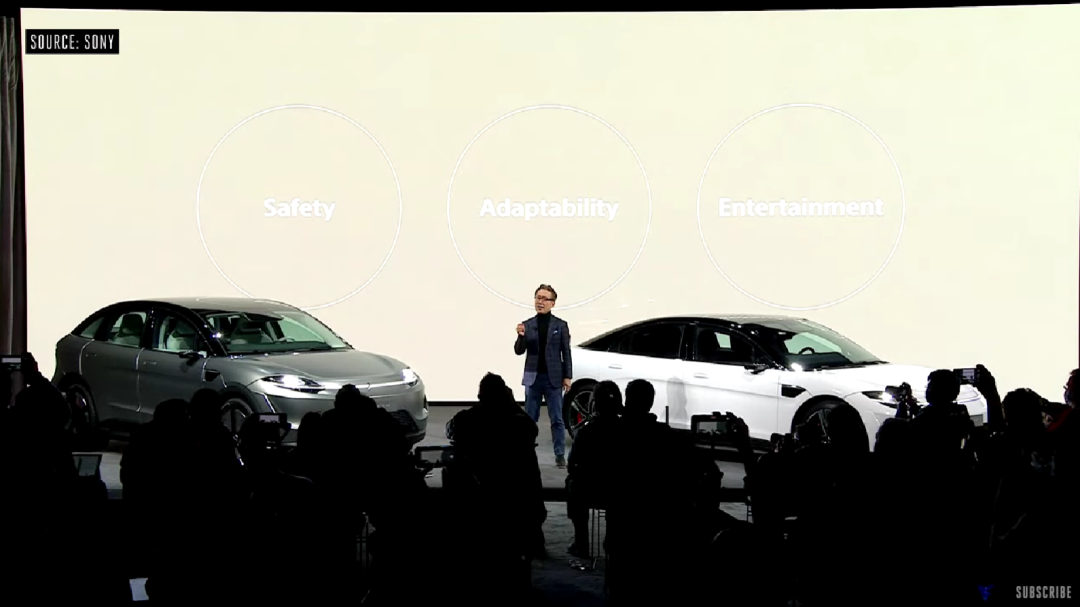
Sony stated that while based on intelligent technology, automobiles are evolving from pure A-to-B mobile tools to intelligent cabins that can create rich mobile experiences, safety is still the top priority.
Therefore, VISION-S 02 is equipped with a total of 40 sensors inside and outside the car, which are used to monitor safety conditions to ensure a safe journey.
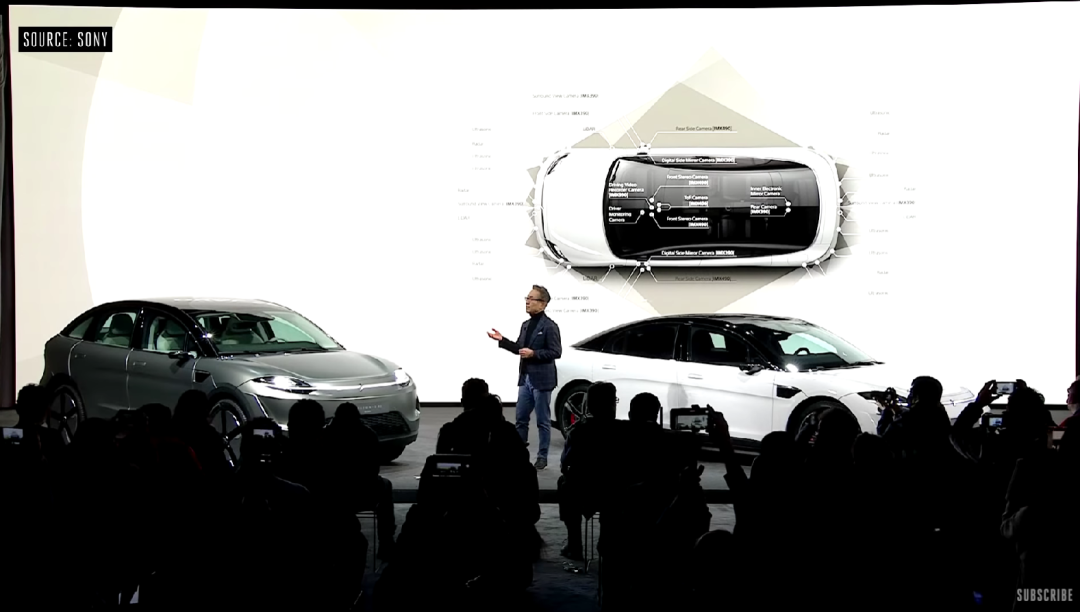
Adaptability refers to the constantly evolving ability of car networking technology to make automobiles intelligent. By utilizing 5G technology, car-mounted systems and cloud systems can achieve high-speed, high-capacity, and low-latency connections.
OTA upgrades ensure that the user experience remains new and fresh, and provides more user-specific settings. The connection of cars, mobile phones, smart homes, and other digital products allows cars to become super mobile terminals that connect everything.
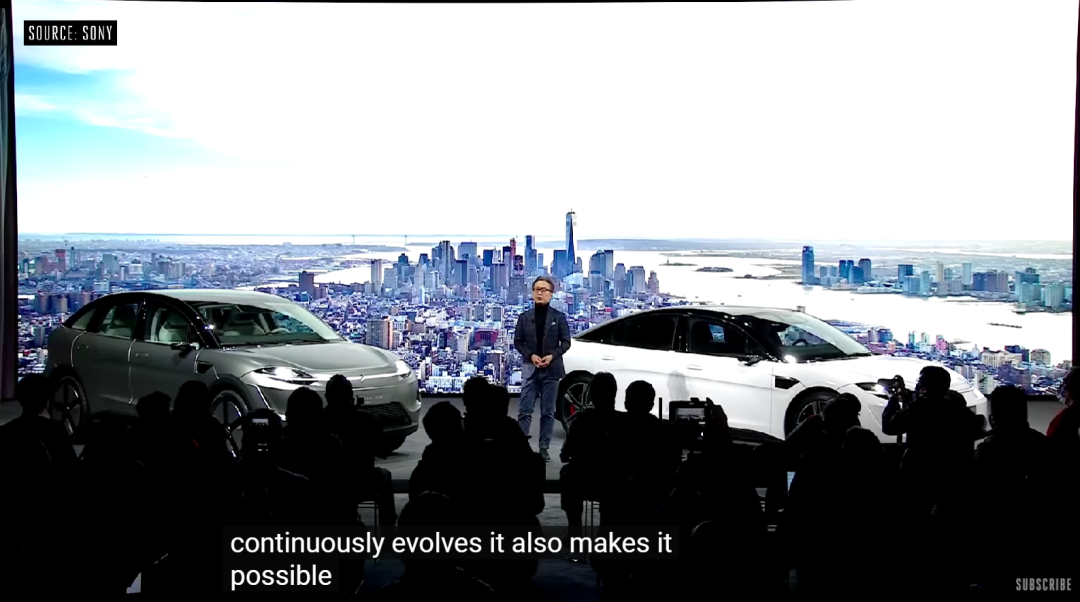
Finally, entertainment clearly refers to using the cabin’s car screen and sound equipment to bring richer audiovisual and game choices to passengers.
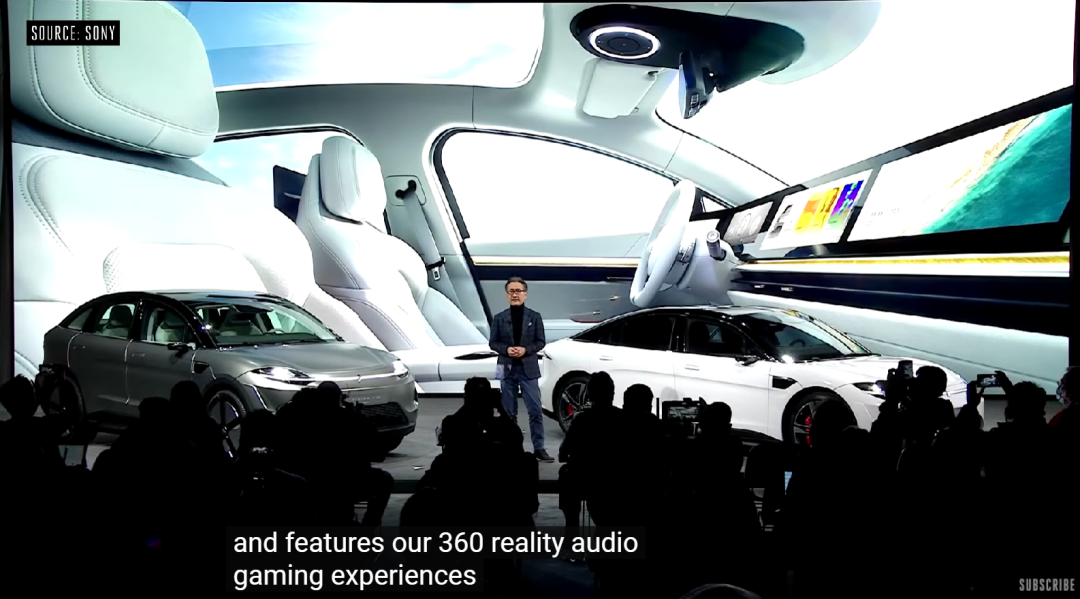
Both of Sony’s concept car cabins are equipped with multi-screen displays made up of five screens, which should bring a fresh audiovisual entertainment experience worth anticipating.
It should be noted that people can now play “The Witcher 3” in Teslas, so it should not be difficult for Sony to install a PlayStation 5 in a car.
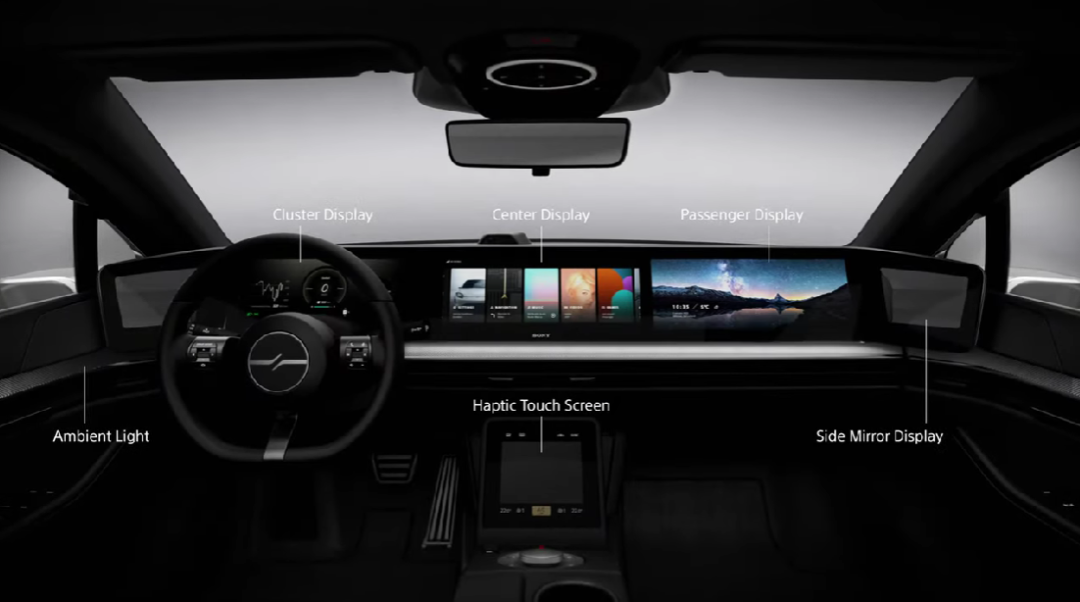 The moment that received the most applause during the entire press conference appeared in the following picture: Sony officially announced the establishment of a new “Sony Mobility Inc.” and started to explore commercialization of electric vehicle business.
The moment that received the most applause during the entire press conference appeared in the following picture: Sony officially announced the establishment of a new “Sony Mobility Inc.” and started to explore commercialization of electric vehicle business.
Although the expression “explore commercialization of electric vehicle business” still sounds ambiguous, it is unclear whether Sony will personally build cars or adopt a mode of cooperation with car manufacturers to extend its technology to other brands of smart cars.
However, thinking again, Sony has accumulated considerable software and hardware technology in fields such as photography, audio, and even electronic games. Integrating these technologies, packaging them into the car cabin seems to be a natural fit.
It sounds similar to another Chinese technology company that keeps emphasizing that it “does not build cars”.
In addition, thinking about the slow transformation of Japanese cars into overall intelligence, I wonder if Sony will stand up and become the “big brother” of Japanese car intelligence?
As electric cars continue to become more popular, consumers’ demand and awareness for automobile intelligence soar. Last year, the “Chip Replacement Door” of a certain car model in China caused a sensation, telling everyone that even young ladies who were previously not very interested in technology now know that the Qualcomm 8155 chip is more advanced than the Intel Atom chip.
And if you only stay on the recognition of the intelligent cockpit system chip when talking about Qualcomm, that seems a bit outdated. At CES 2022, Qualcomm brought a whole-family smart car solution, the Snapdragon digital chassis.The Snapdragon Digital Chassis is composed of several parts, covering four aspects of autonomous driving, intelligent cabin, car connectivity, and cloud services, forming a complete and open cloud-connected platform.
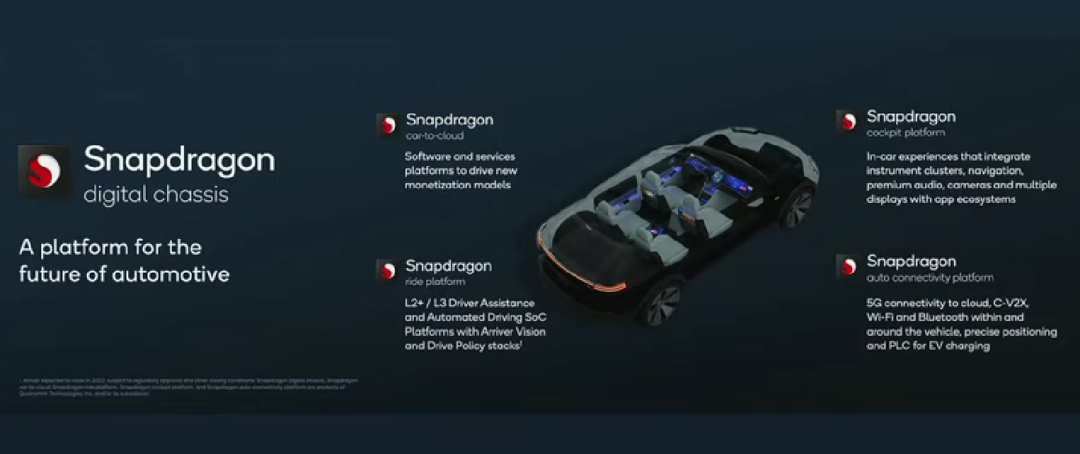
1. Autonomous Driving Platform Snapdragon Ride
This is an open and programmable autonomous driving platform that can satisfy the development needs of automakers, from the new car assessment specification (NCAP) to L2+/L3 level driving assistance and autonomous driving.
On the hardware side, Qualcomm provides automakers with an expandable 4-nanometer system-on-chip (SoC) processor and accelerator product combination for vision, central computing, and high-performance autonomous driving needs.
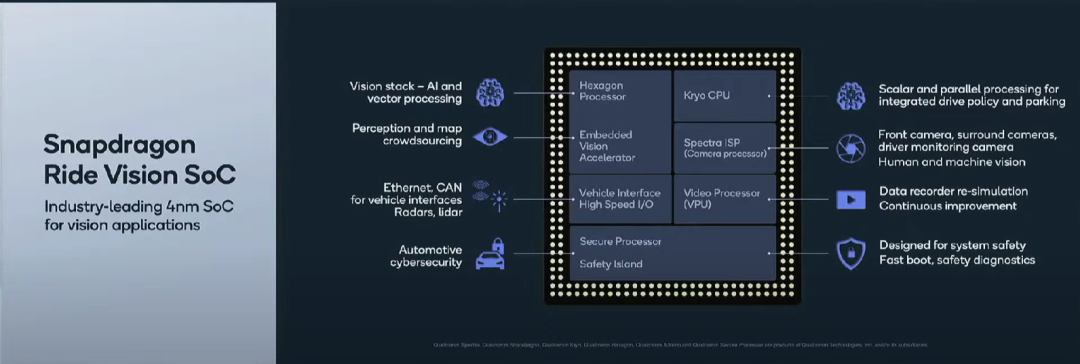
On the software side, based on Arriver’s one-stop vision software stack, Qualcomm will support automakers and Tier-1 suppliers in creating their own autonomous driving, parking, or driver monitoring related software functions.
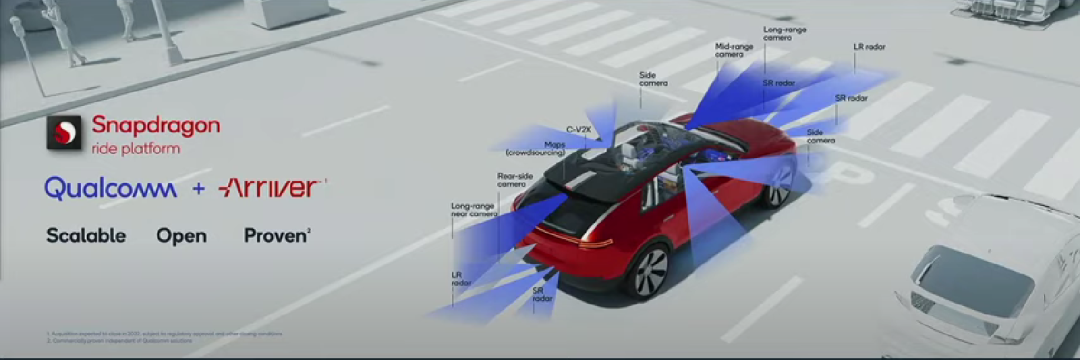
The platform also provides comprehensive support for advanced features, functional safety/expected functional safety (SOTIF), and system architecture capabilities.
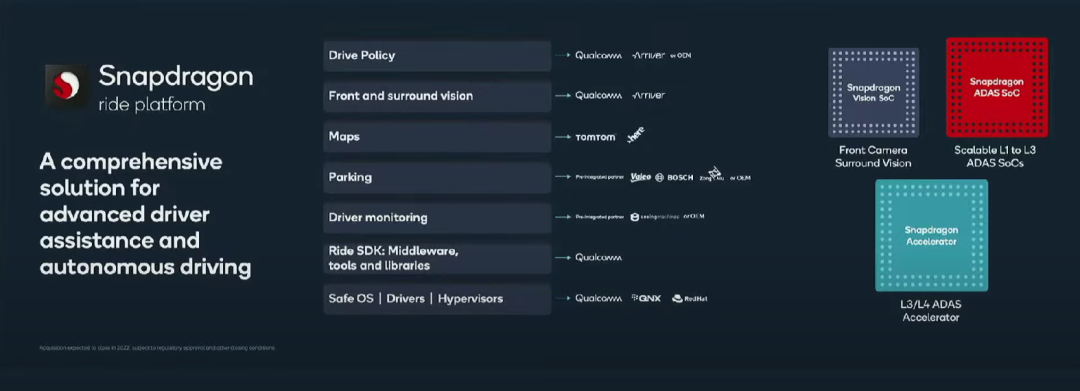
2. Snapdragon Intelligent Cockpit
Qualcomm has launched the 4th generation Snapdragon Intelligent Cockpit platform, providing automakers with highly customizable and always connected cockpit system chips and software solutions.
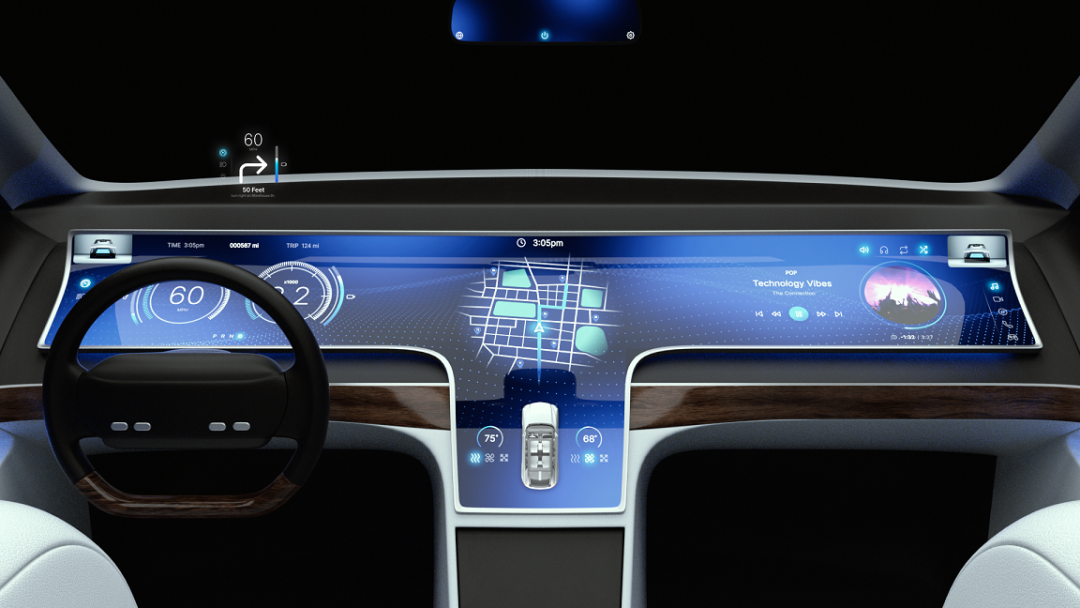
The 4th generation Snapdragon Cockpit platform can meet the needs of intelligent cars for partition or domain in computing, performance, and functional safety, bring high-performance computing, rich graphics and multimedia, highly intuitive AI experience, situational awareness and security enhancement functions, and immersive audio and other diverse functions.
3. Snapdragon Automotive Connectivity Platform
Based on LTE and 5G network services, cellular vehicle-to-everything (C-V2X), Wi-Fi, Bluetooth, and precise positioning capabilities, the Snapdragon Digital Chassis will fully support the safe connection between cars and the cloud, other vehicles, and the surrounding environment, meeting consumers’ demands for a safer and more immersive driving experience.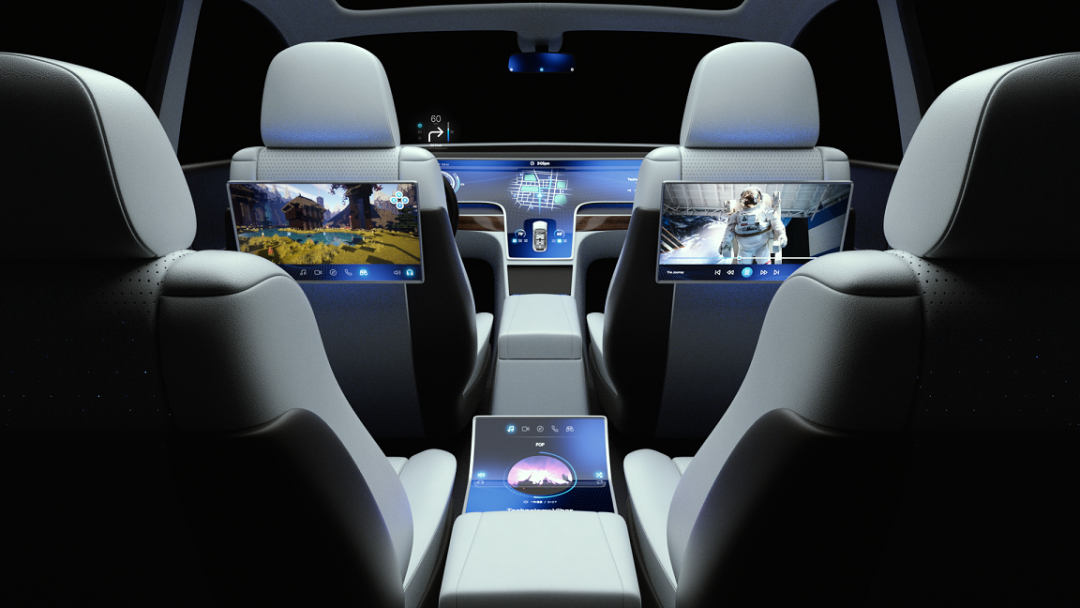
4. Snapdragon for Cloud Services
Designed for a brand-new business model, the Snapdragon digital chassis can provide flexible feature combinations, performance upgrades, and entirely new functions for automakers through pre-integrated software and service platforms.
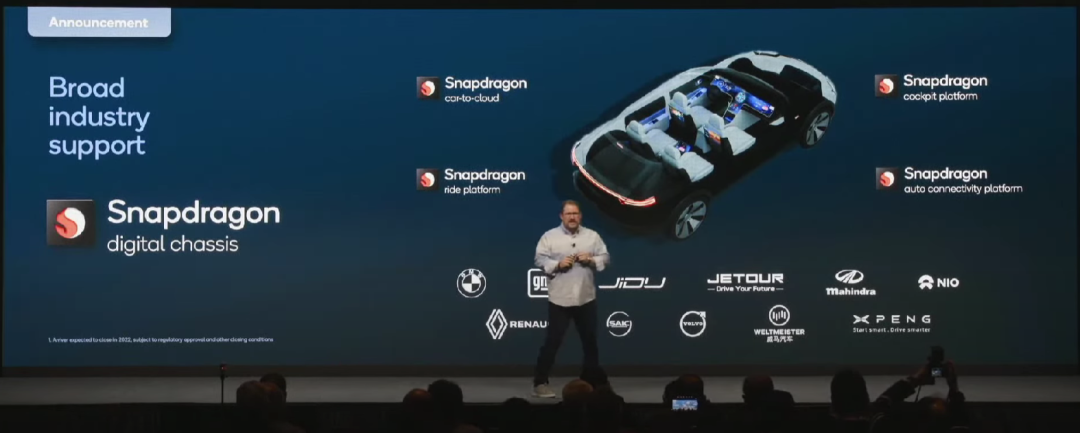
Qualcomm stated that automakers can choose any platform or all of the platforms encompassed by the Snapdragon digital chassis in their product lines and offer a highly customized experience for their products through continuous cloud upgrades.
In other words, automakers can choose to purchase either a complete or partial range of features of the Snapdragon digital chassis, enhancing their vehicle intelligence.
But how much profit will this bring?
Qualcomm showed considerable confidence at the press conference: currently, 37 manufacturers, including Honda, Volvo, BMW, Hyundai, GM, Xpeng, WmAuto, and many other familiar names, have cooperated with them, and the total estimated value of orders exceeds 13 billion US dollars.
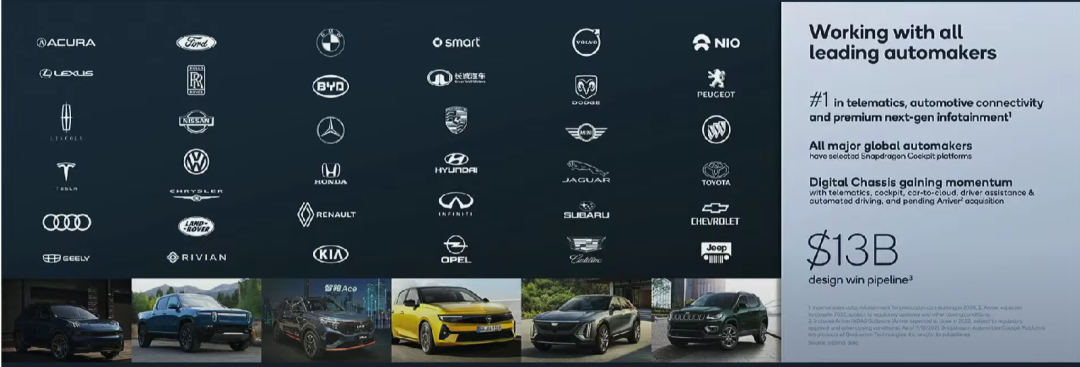
NVIDIA: Hyperion 8 Integrated ADAS Solution
Qualcomm has extended its arms from intelligent cabins to intelligent cars, and naturally, other manufacturers will also go further in their originally focused fields.
At CES 2022, NVIDIA once again exhibited the Hyperion 8 Autonomous Driving Platform. This platform had been officially announced at the GTC conference in November last year, and more detailed information can be found by clicking Host Factory Gospel: NVIDIA’s Integrated ADAS Solution.
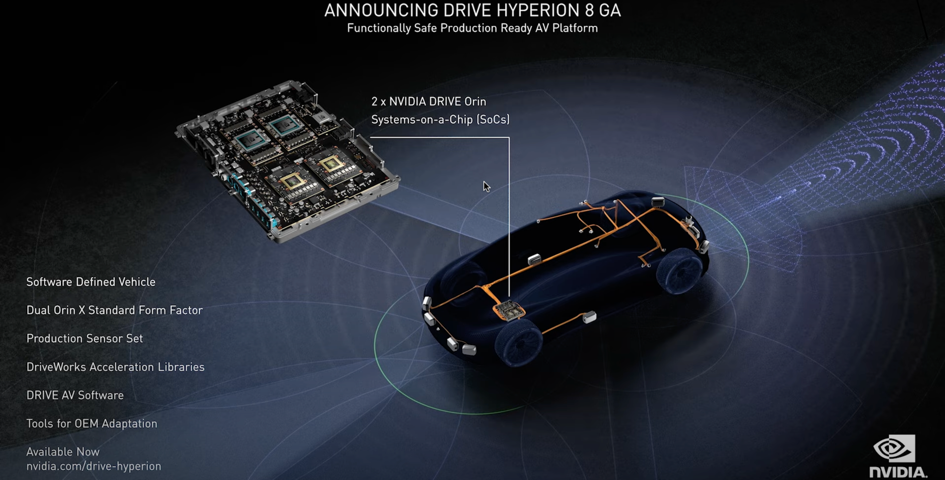
In summary, Hyperion 8 can be summarized as a hardware and software integrated autonomous driving solution that NVIDIA has built for automakers.
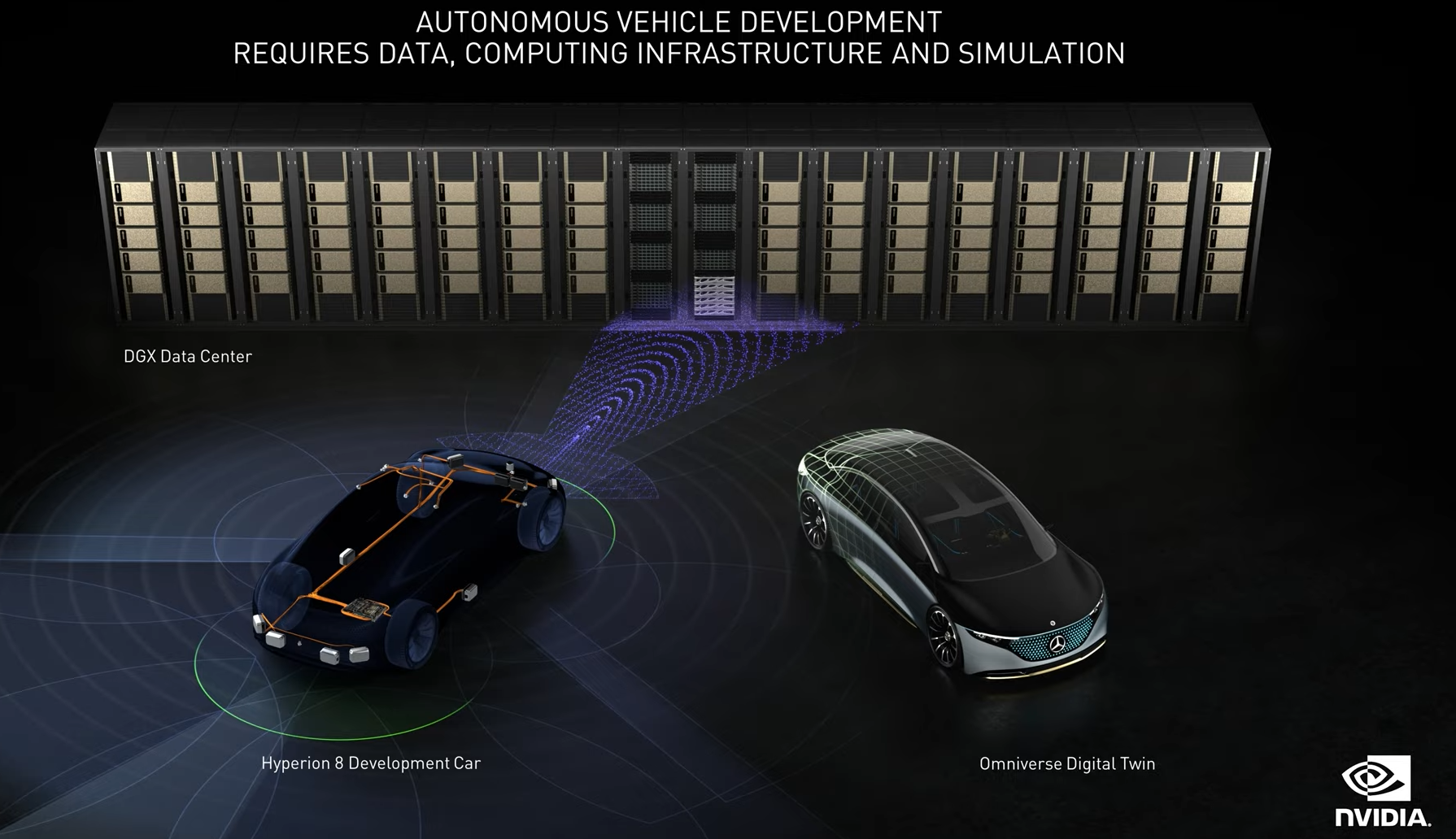
On the hardware side, Hyperion 8 is powered by two Orin chips with a total computing power of more than 500TOPS. In terms of sensors, it includes 12 cameras, 9 millimeter-wave radars, 12 ultrasonic sensors, and 1 front lidar.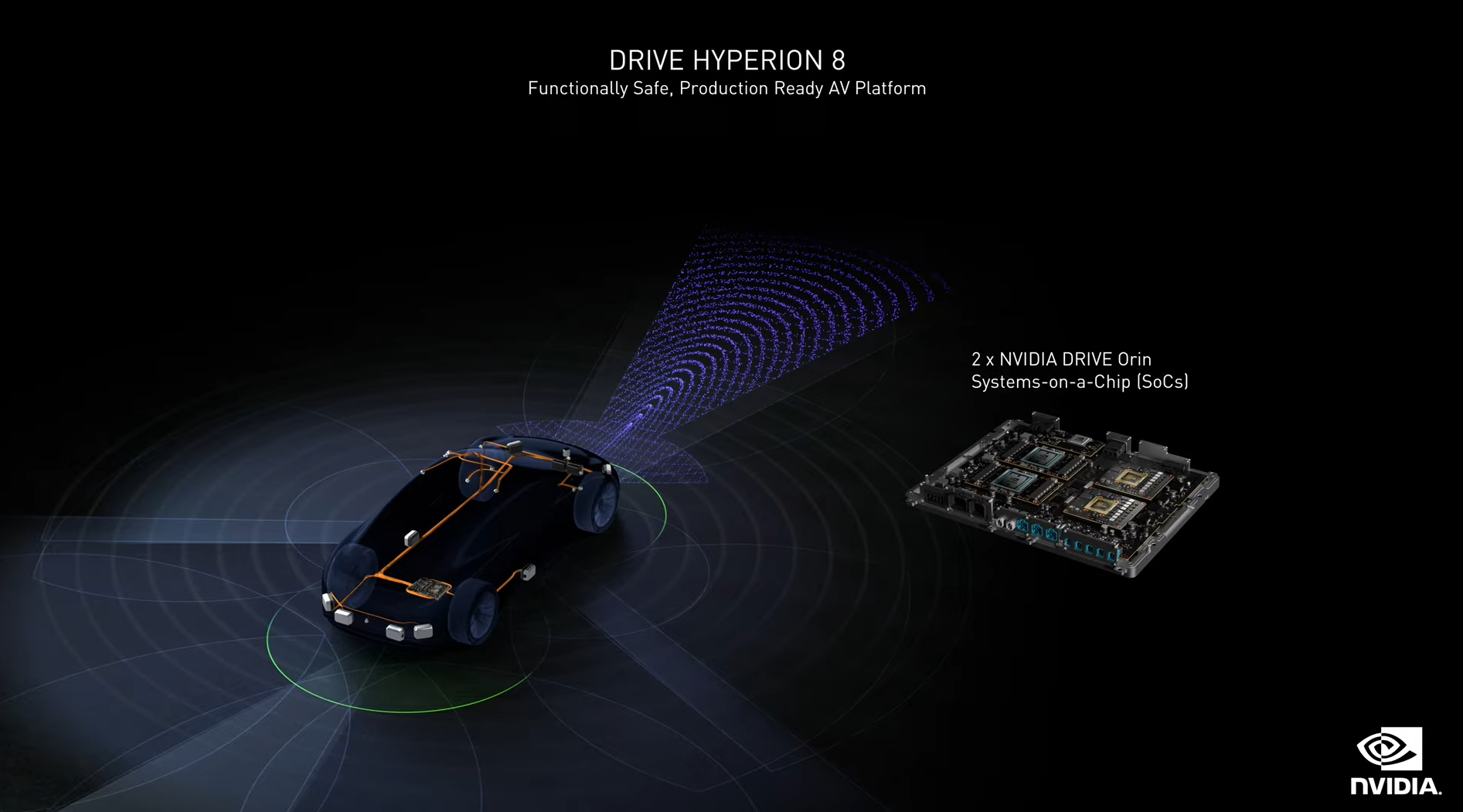
With perfect hardware in place, powerful supporting software is also necessary. Hyperion 8 comes with the DRIVE Sim platform for machine learning training, testing, and validation for autonomous driving purposes.
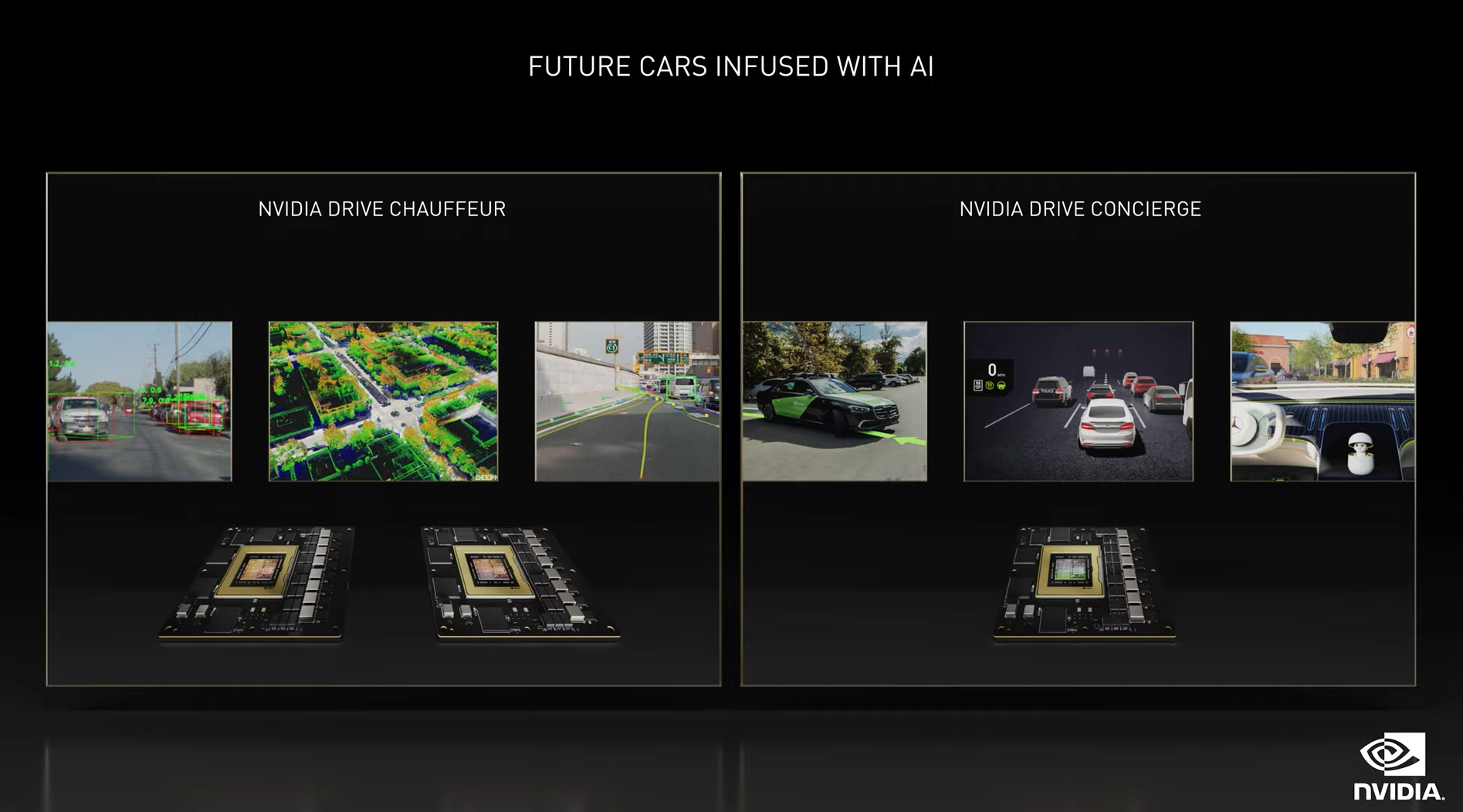
This software platform uses real-world physical data collected from vehicles to generate a virtual environment similar to the real world, where the autonomous driving assistance software can continuously practice and improve its ability.
It is reported that autonomous driving manufacturers equipped with DRIVE Sim can accelerate deployment plans in 2022.
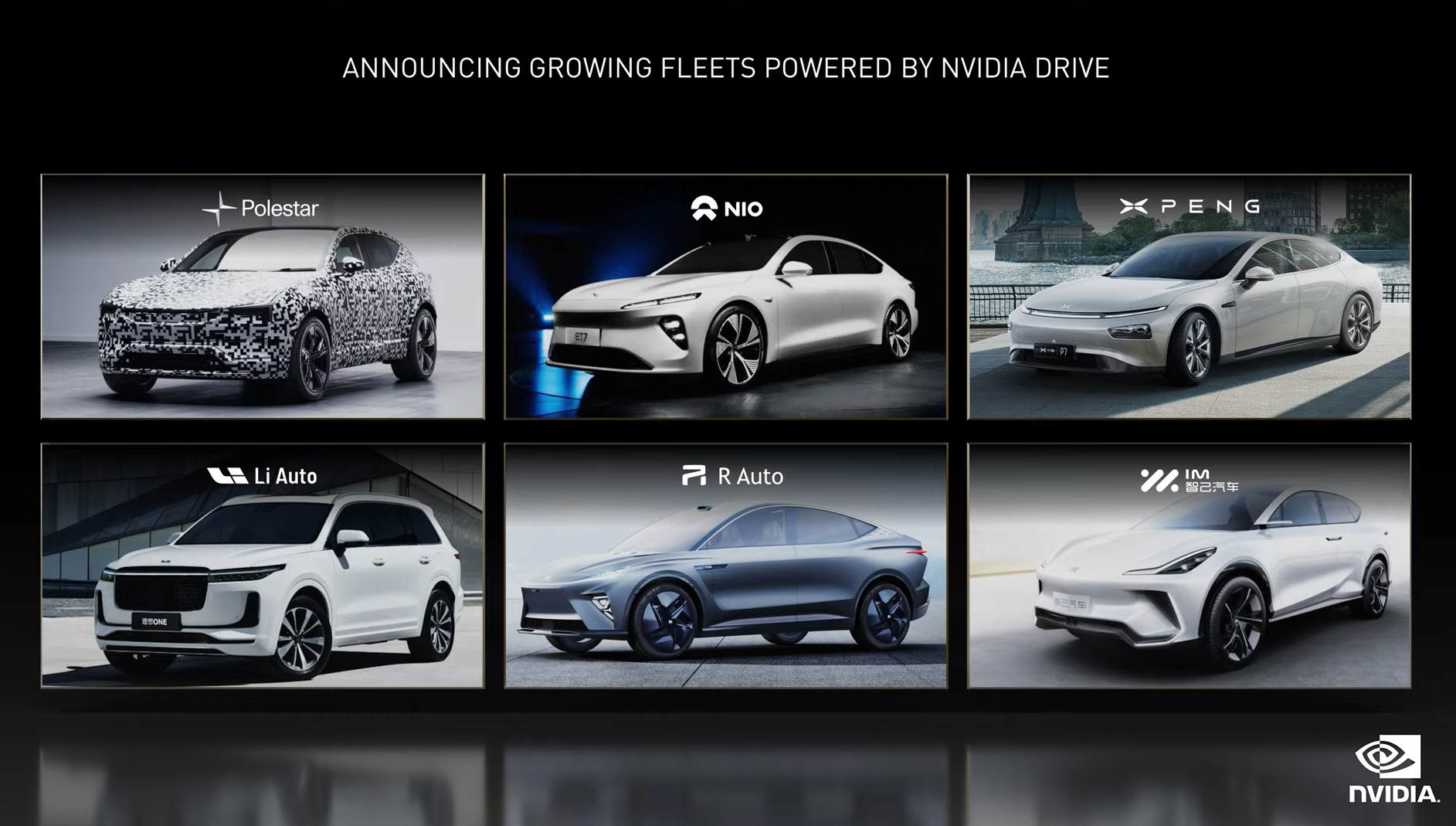
As previously mentioned, Mercedes-Benz and NVIDIA will build a new in-vehicle computer architecture based on the DRIVE AGX platform. They will jointly develop AI and autonomous driving applications, including SAE Level 2 and Level 3 functions and autonomous parking functions (up to Level 4). The new architecture will be deployed in the next generation of Mercedes-Benz products, with a timeline set in 2024.
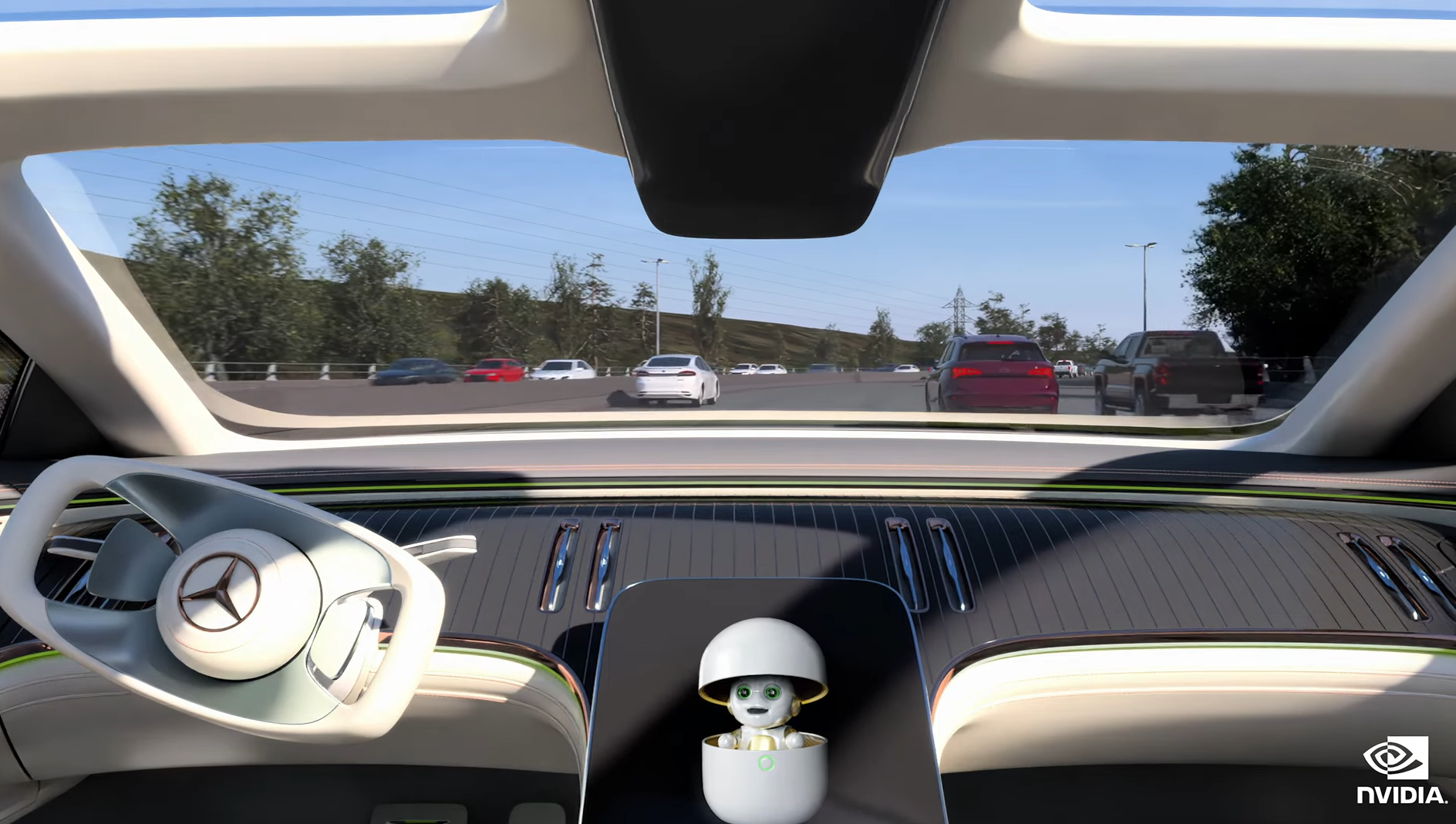
In other words, as early as 2024, we will be able to see models equipped with NVIDIA autonomous driving solutions on the road.
Mobileye: Autonomous driving empowers global carmakers
Finally, let’s not forget about Mobileye, Intel’s autonomous driving solution provider. For information about this company, you can also read our previous article about their independent listing, “Behind Mobileye’s Anxiety: A Review.”
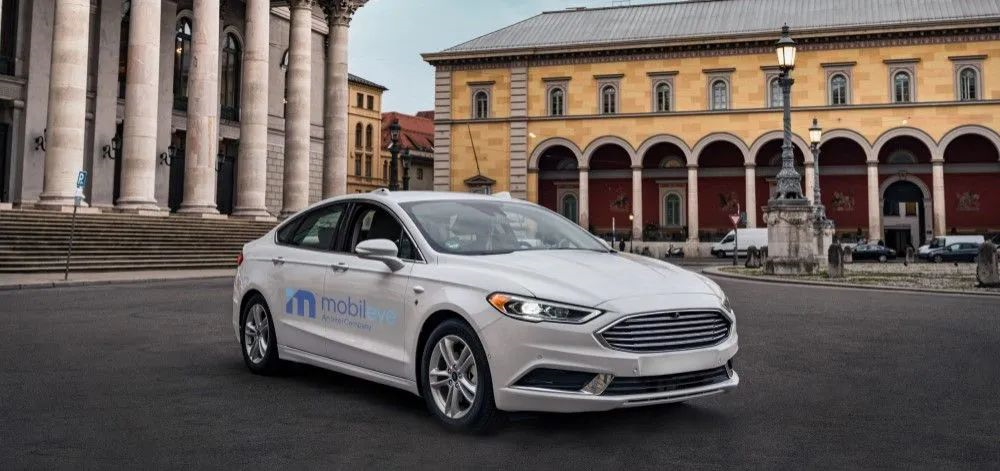
At CES 2022, Mobileye had a significant presence at Intel’s press conference, with three new initiatives summarized as follows: a new chip, new maps, and higher-level autonomous driving capabilities for vehicles.On the chip side, Mobileye has introduced the new EyeQ Ultra autonomous driving chip. This chip uses 5 nanometer process technology and has a computing power of 176 TOPS. At the same time, the actual power consumption of the chip will be less than 100 watts, thus reducing the additional power consumption caused by autonomous driving systems.
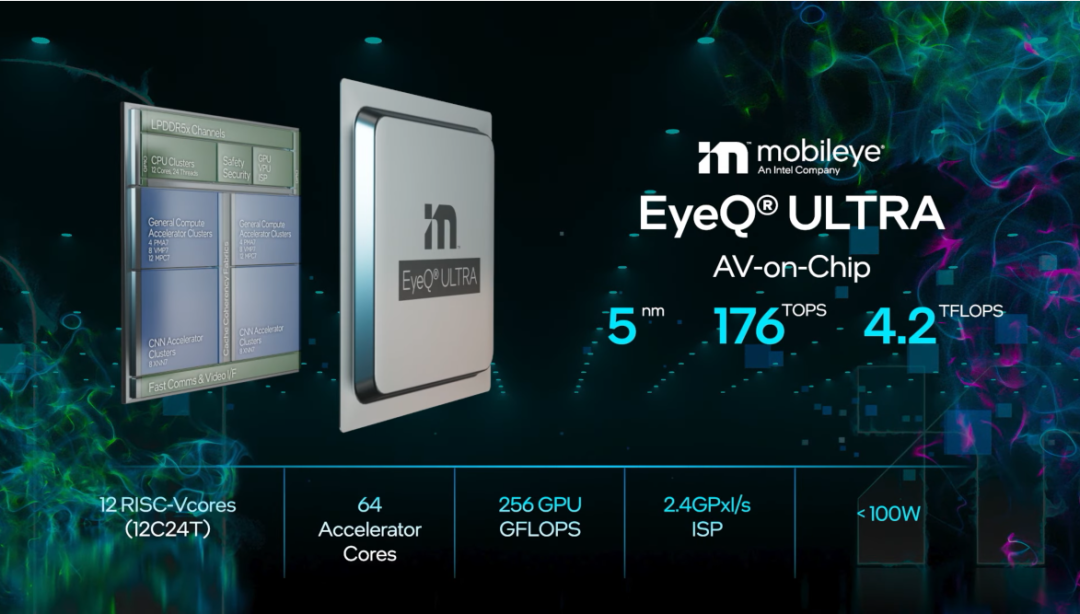
It is reported that the EyeQ Ultra chip will be put into mass production by the end of 2023 or the beginning of 2024, and will be used on a large scale in 2025.
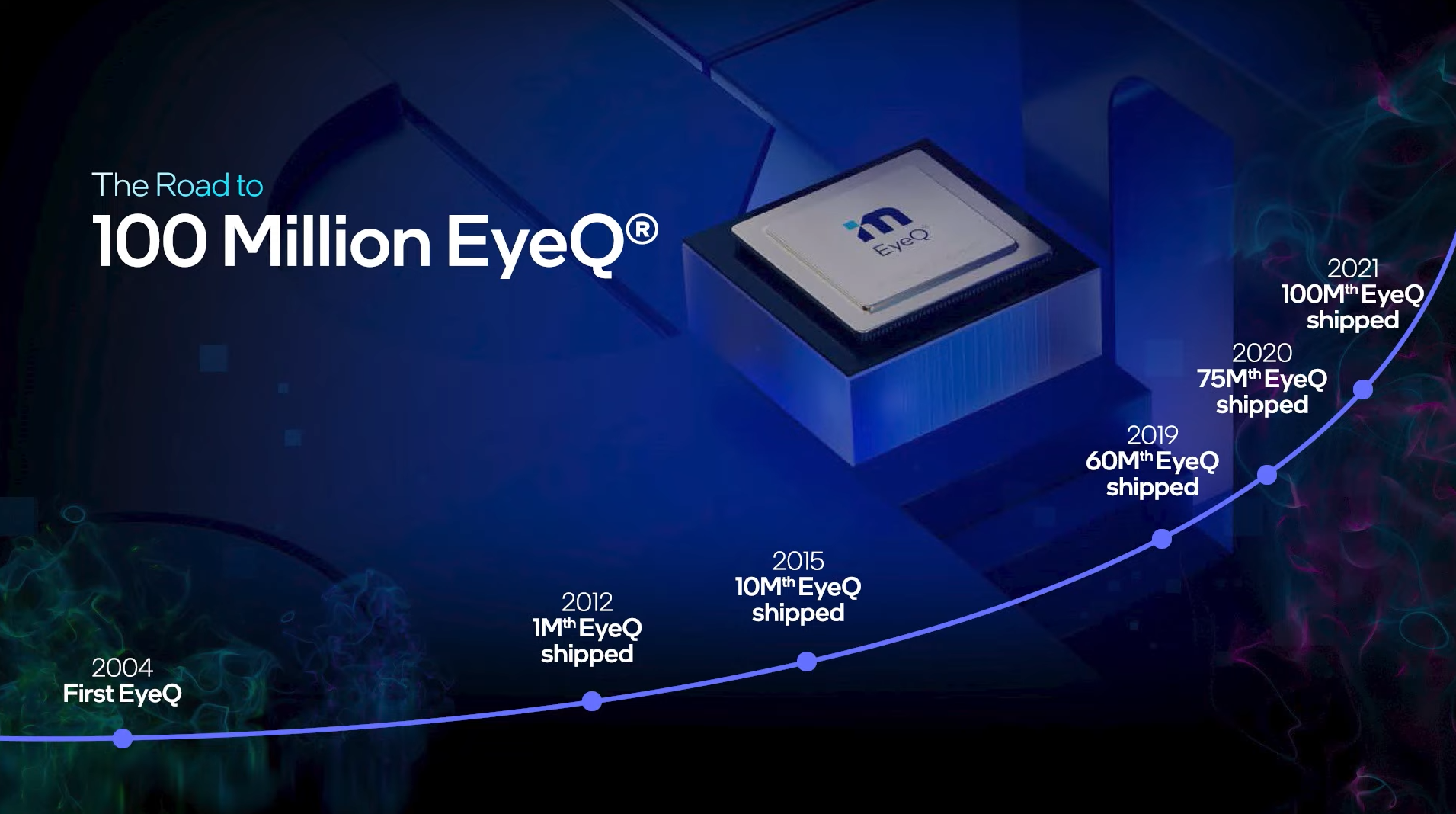
In addition to the new chip, Mobileye also stated that its mapping platform will be installed in vehicles from automakers, including Volkswagen and Ford.
Previously, Mobileye had conducted considerable scale commercial tests of autonomous driving in major international cities such as Paris and Tokyo. Data accumulated from these tests, in addition to serving Mobileye’s autonomous driving taxi business, will also provide benefits to automakers.
The Volkswagen group’s ID. electric car family on the MEB platform and Ford models equipped with the BlueCruise driving assistance system will be among the first to benefit from the Mobileye mapping platform. The platform can capture real-time driving data of vehicles, making the autonomous driving assistance performance more stable on unmarked roads.
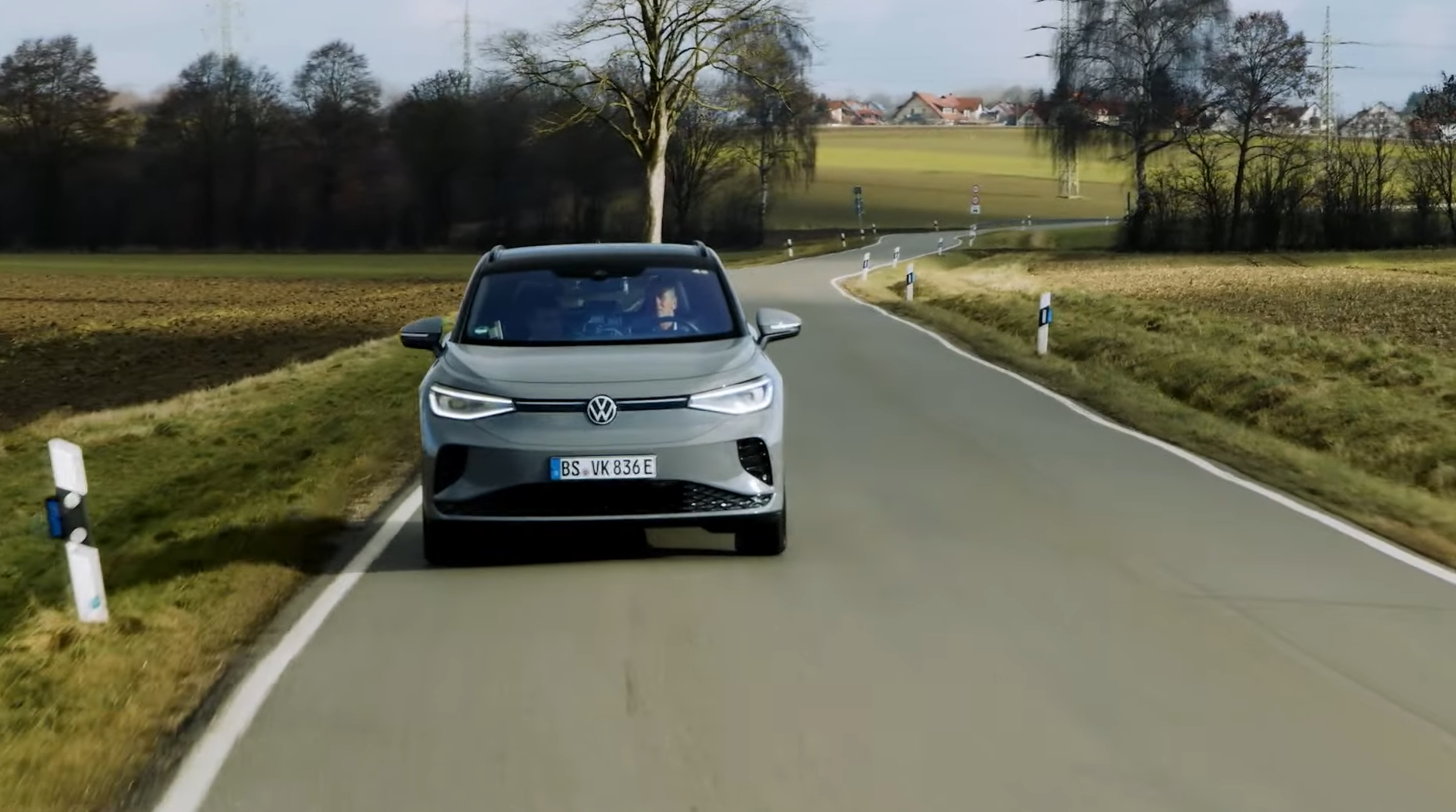
At the press conference, we saw Volkswagen Group CEO Herbert Diess sitting in an ID.4 vehicle equipped with Mobileye maps and driving automatically, having a lively discussion with Mobileye CEO Amnon Shashua.
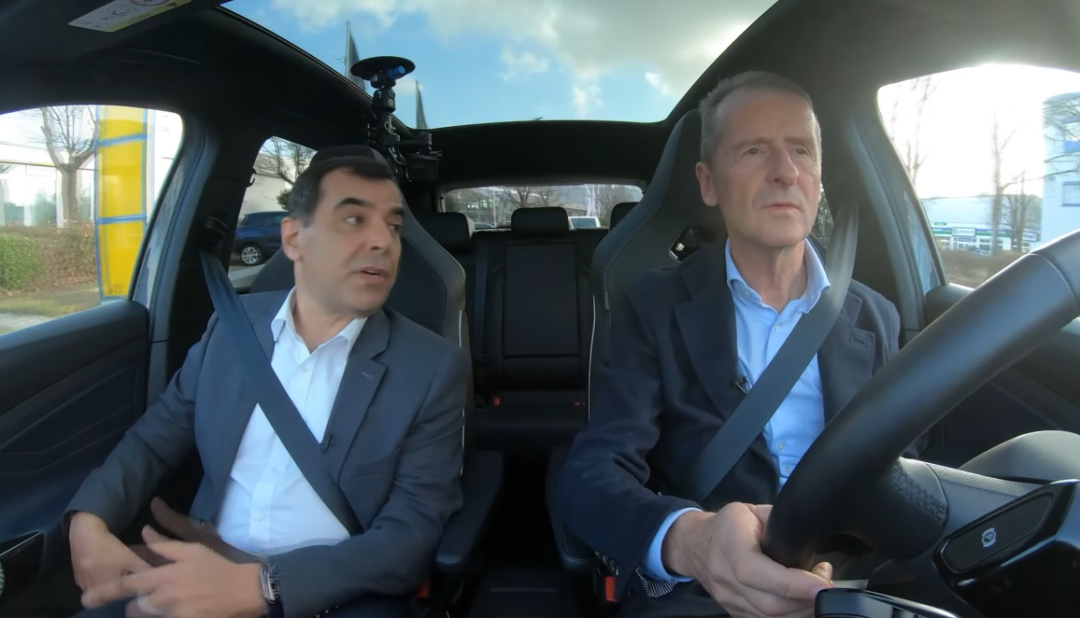
It appears that Mobileye’s new technology is mainly serving international customers, and most of the company’s autonomous driving technology tests are conducted in foreign cities, seemingly with little connection to Chinese consumers.
However, if we look closely at the blurred background behind the company’s CEO in the press conference, we can still see a lot of “Chinese elements.”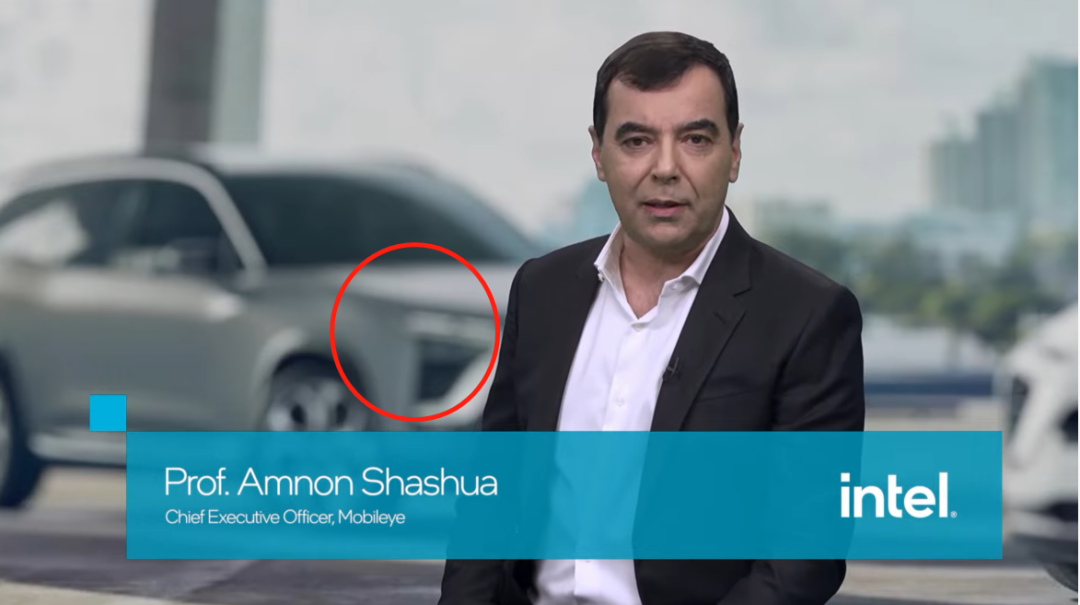
In addition to this little surprise, Mobileye has also come up with a new plan to work with a Chinese manufacturer – Jikuauto – to launch the world’s first L4 autonomous driving SUV in 2024.
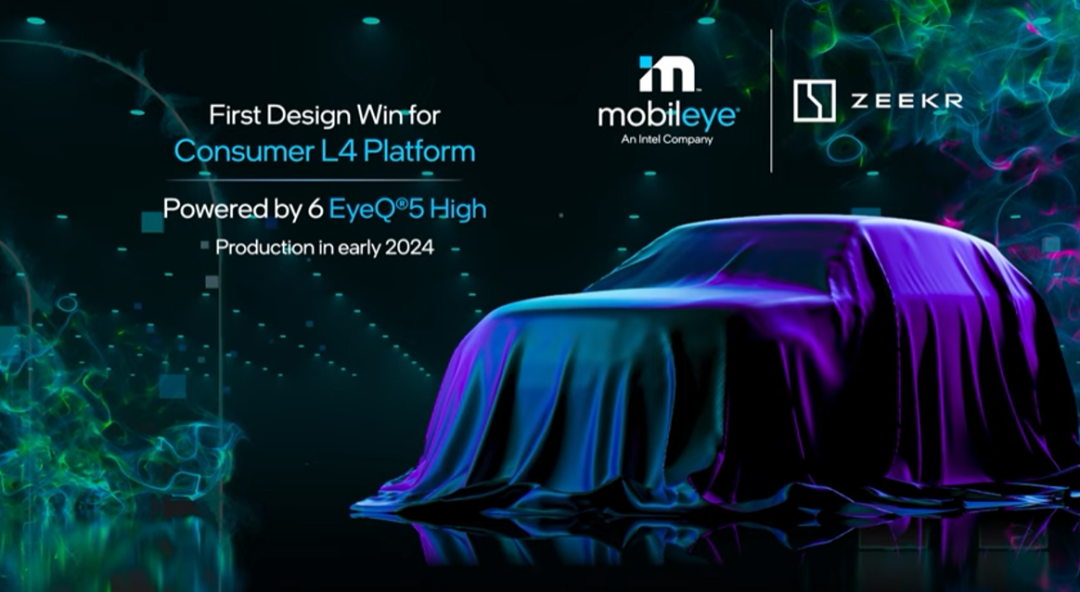
Based on the SEA architecture, it will be equipped with 6 EyeQ5 system chips as hardware foundation in conjunction with Jikuauto’s proprietary software technology, Mobileye True Redundancy sensing solution, Responsibility Sensitive Safety (RSS) system, and REM technology for road network acquisition management.

However, compared to the distant 2024, most Chinese consumers may be more concerned about when Jikuauto 001 – which has already been launched – will be able to activate its autonomous driving assistance function. When Jikuauto 001 was delivered a few months ago, even the most basic AP was unable to be turned on, which was quite surprising.
Mobileye has provided some clues about this issue during its release conference. The company showed a video of Jikuauto 001 in Israel undergoing road tests where the test vehicle was already able to perform automatic lane changing and unprotected turns and other autonomous driving assistance functions.
Mobileye also stated that it is expected to push related OTA upgrades to Jikuauto 001 within the next few months to provide it with L2 level autonomous driving assistance functions.
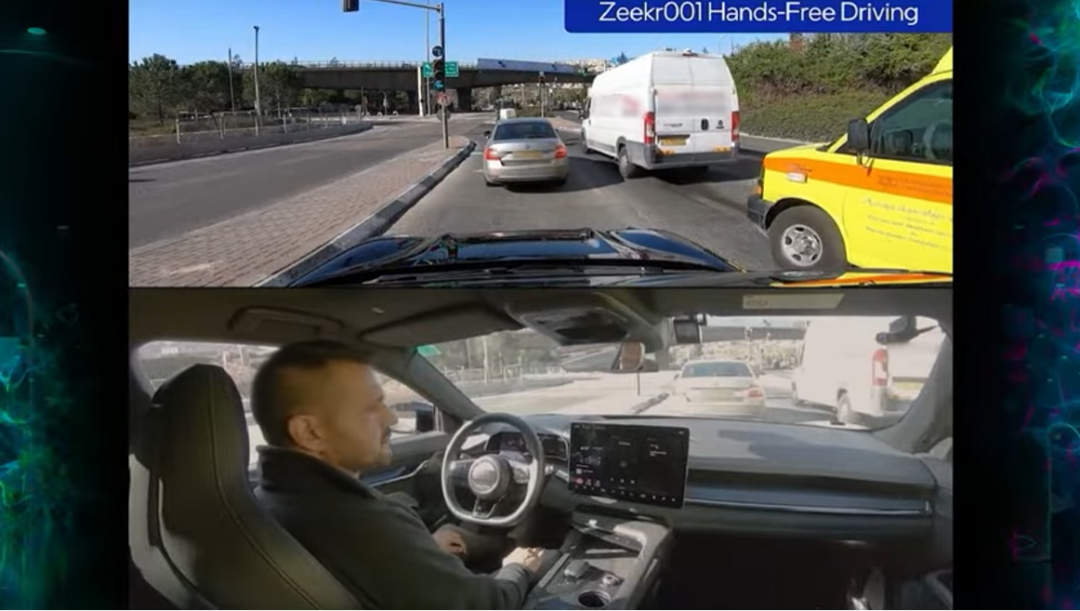
As for how autonomous driving would perform on actual roads in China with Jikuauto 001, we can only wait and see.
Conclusion
These are just some of the highlights of major technology giants at CES 2022.
Every year, CES brings us many eye-catching, advanced, yet fragmented new technologies and trends, each painting a very promising picture of the future of intelligent vehicles.
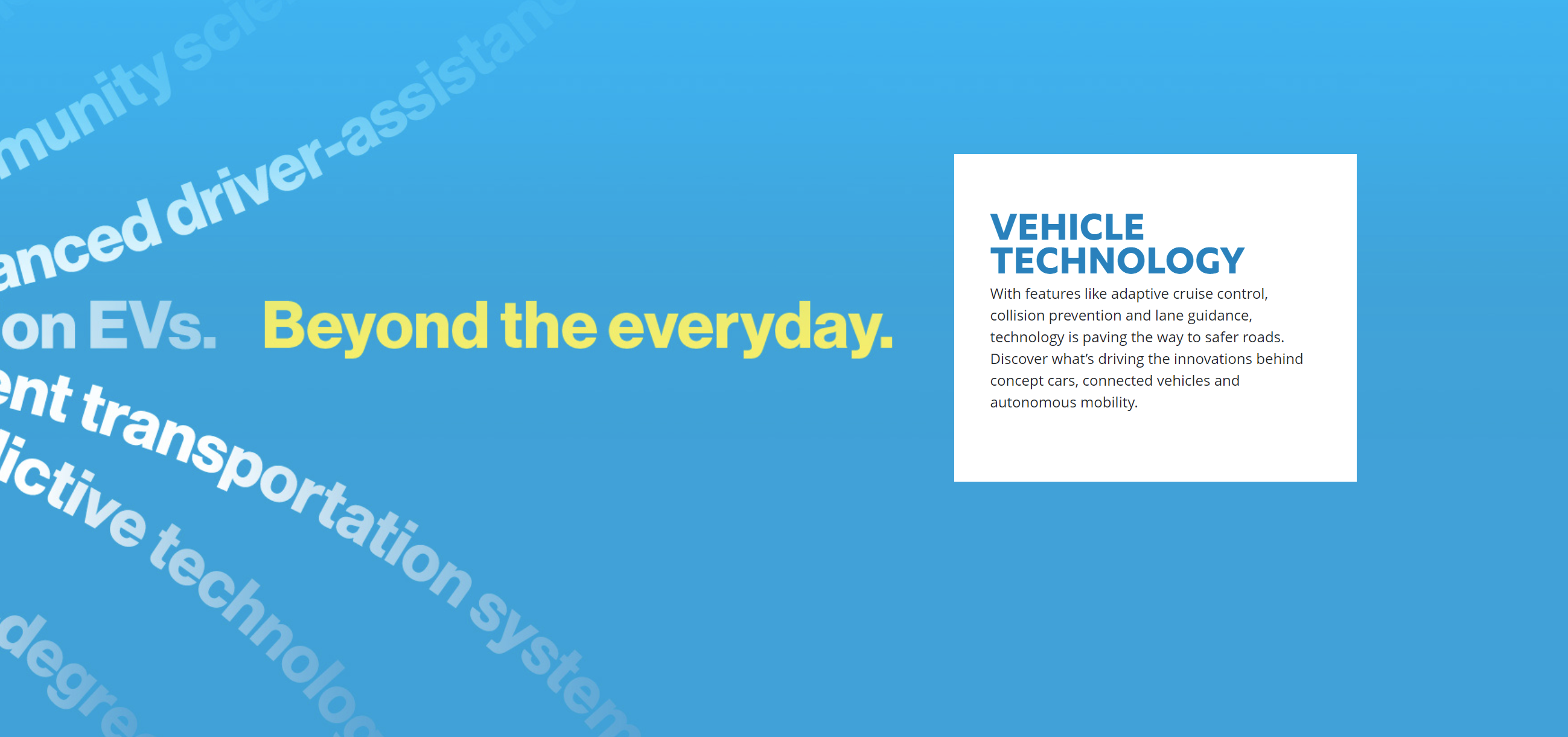 However, in the current reality of the global COVID-19 pandemic, it seems unclear as to when these new technologies can truly come to fruition.
However, in the current reality of the global COVID-19 pandemic, it seems unclear as to when these new technologies can truly come to fruition.
But through the lens of technological innovation itself, we can still see two clear trends:
-
The traditional automotive industry’s pyramid-style collaboration model between suppliers and manufacturers is now being broken. The influx of more and more technology giants and innovative companies is giving rise to a web-like structure in the field of automotive intelligence.
-
The trend of intelligent vehicles is unstoppable. After the era of smartphones, this will be the most active field for technological innovation both in China and worldwide.
It is these two clear trends that are revitalizing the once traditional and conservative automotive industry with unlimited vitality.
This article is a translation by ChatGPT of a Chinese report from 42HOW. If you have any questions about it, please email bd@42how.com.
